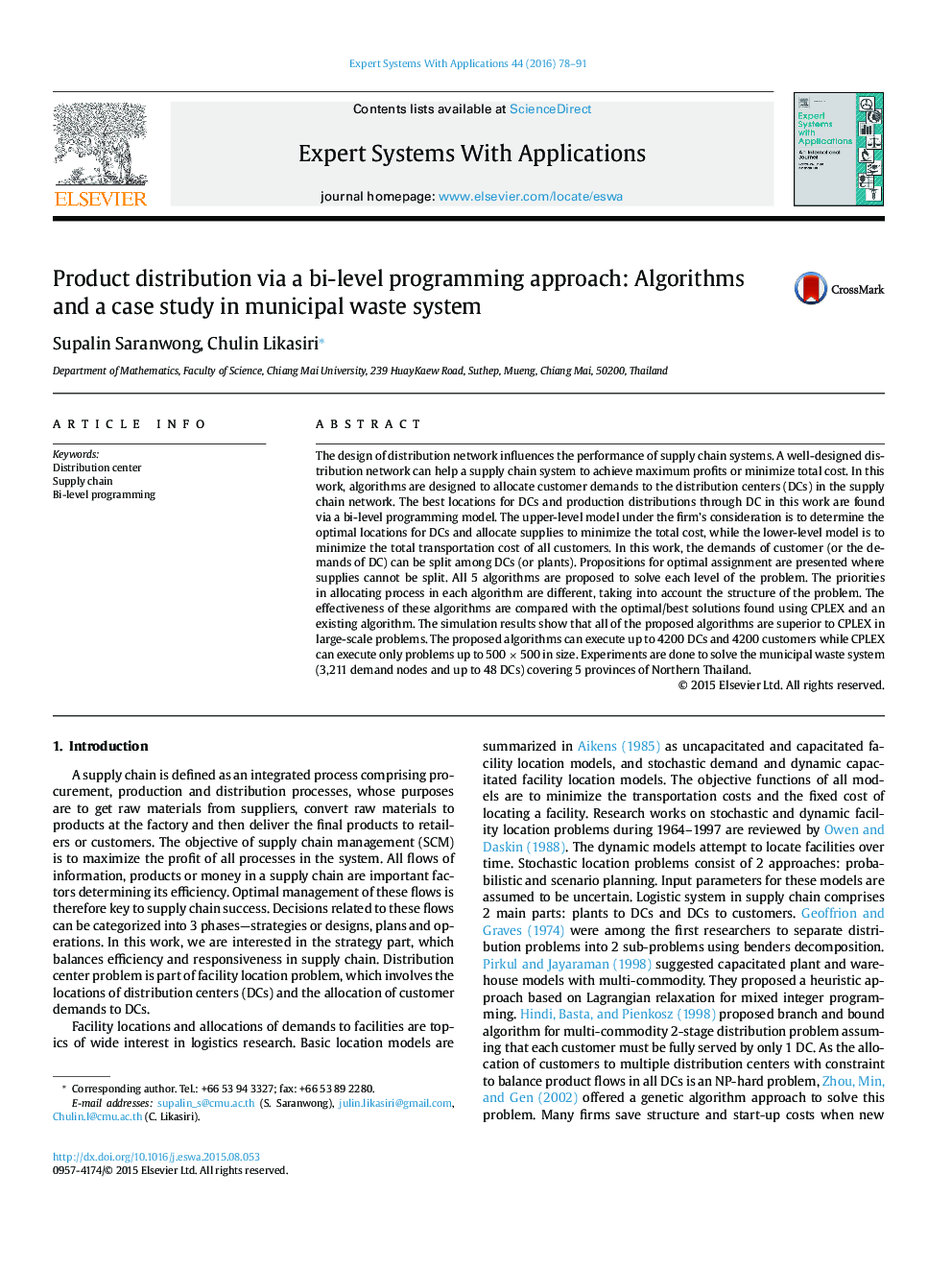| کد مقاله | کد نشریه | سال انتشار | مقاله انگلیسی | نسخه تمام متن |
|---|---|---|---|---|
| 382026 | 660723 | 2016 | 14 صفحه PDF | دانلود رایگان |
• Product distribution problem is modeled as a bi-level programming.
• Optimal assignment for problems in which supplies cannot be split is given.
• 5 algorithms are proposed for solving lower-level problem in the bi-level model.
• Effectiveness's of all algorithms are compared with the solution from CPLEX.
• Waste system of Northern Thailand is studied and compared with existing work.
The design of distribution network influences the performance of supply chain systems. A well-designed distribution network can help a supply chain system to achieve maximum profits or minimize total cost. In this work, algorithms are designed to allocate customer demands to the distribution centers (DCs) in the supply chain network. The best locations for DCs and production distributions through DC in this work are found via a bi-level programming model. The upper-level model under the firm's consideration is to determine the optimal locations for DCs and allocate supplies to minimize the total cost, while the lower-level model is to minimize the total transportation cost of all customers. In this work, the demands of customer (or the demands of DC) can be split among DCs (or plants). Propositions for optimal assignment are presented where supplies cannot be split. All 5 algorithms are proposed to solve each level of the problem. The priorities in allocating process in each algorithm are different, taking into account the structure of the problem. The effectiveness of these algorithms are compared with the optimal/best solutions found using CPLEX and an existing algorithm. The simulation results show that all of the proposed algorithms are superior to CPLEX in large-scale problems. The proposed algorithms can execute up to 4200 DCs and 4200 customers while CPLEX can execute only problems up to 500 × 500 in size. Experiments are done to solve the municipal waste system (3,211 demand nodes and up to 48 DCs) covering 5 provinces of Northern Thailand.
Journal: Expert Systems with Applications - Volume 44, February 2016, Pages 78–91
